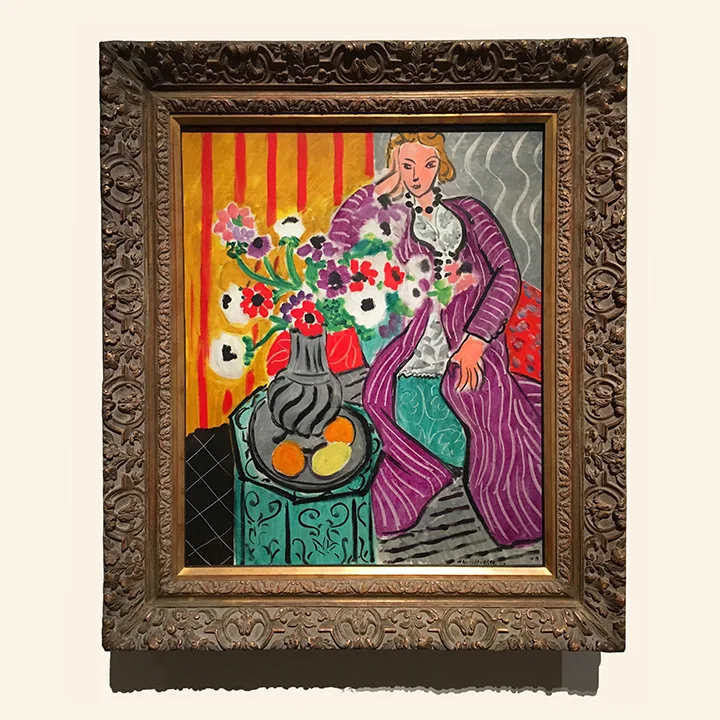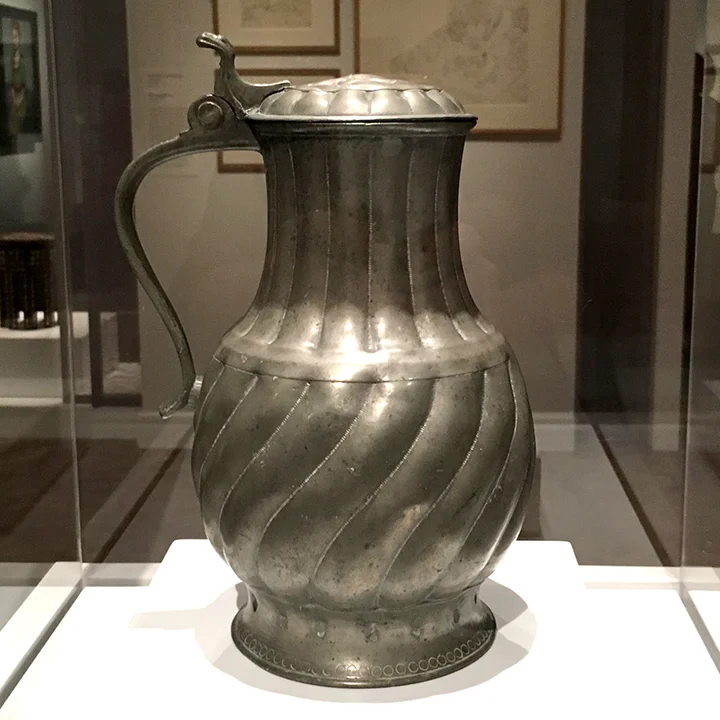In my early teens, I visited the Boston of Museum of Fine Arts to see a huge exhibition of work by Henri Matisse. I had never been to the MFA, and I certainly had never seen a Matisse painting in person, although I had looked at his work many times in books. Nothing could have prepared me for the overwhelming impact of standing in front of his work at my impressionable age.
Having only seen small images in books, the sheer size was amazing. But what stunned me was the brilliance of the color. Some paintings looked as though they were lit from behind by fluorescent lights. I could not believe it was paint alone. The vitality of the brushstrokes gave the work even more energy and presence. This master of color and juxtapositions of patterns understood how to make paintings come to life. I could not have truly appreciated the master's work without standing where he had stood, directly in front of the canvas.
Since that day, I have adored visiting art museums. My teacher once told me that some artists don't like going to museums because they feel their work will never measure up to the masters, and it makes them feel inferior. Instead, she told me to think of these masters as my teachers, as though they were right in front of me teaching me how to paint the turn of a human head, the glow of a sunset, or the form of an apple.
So I have always thought of the great masters as my teachers, my guides, my friends who have left behind great lessons for me and those who are open to their teachings. I am always the one in the gallery who is closely studying the canvas. I want to see the artist's brushstrokes, how thick and thin the paint may be, the color of the underpainting. It is endlessly fascinating. It makes me want to run home and paint as fast as I can.
This past week, work by my old pal Mr. Matisse was back in town at the MFA. So I had to go say "hi." This time, his cast of characters, the objects that were subjects of his paintings, were displayed next to his art. Thus, we can learn a little more about artistic decisions--what to keep, what to let go of, and what to emphasize when working from life. Look at the pewter pitcher below depicted in the painting (above).
Matisse pewter jug that appears in the painting (above)
Also at the MFA, was an exhibition of work by Sandro Botticelli. The last time I saw his work was standing before his enormous mural, Primavera, at the Uffizi in Florence. It had brought tears to my eyes, it was so breathtakingly beautiful, so unlike the slides in lectures, so unlike the photos in books, so unlike anything I had ever seen. How impossibly small his brushes must have been! So last week I also stopped in to say hello to his work and offer a little thank you to Mr. Botticelli for his inspiration, his delicacy, his attention to detail, and his portrayal of tenderness and love. I took many (non-flash) photos and can't wait to show my art students.
Sandro Botticelli, Madonna of the Loggia (detail), 1467, Tempera
A museum holds many treasures, many gifts. Some of the greatest of human accomplishments can be found quietly waiting for you on its walls. So take some time to marvel at what human beings are capable of achieving with their hands, head and heart when they are at their best. And rather than say "I like this," or "I don't like that," ask what it means, and most importantly, what does it mean to you? Make it a personal adventure and remain open to the many ways people through the ages have expressed the human experience. You might make a few friends there yourself.
#mfaboston @mfaboston


